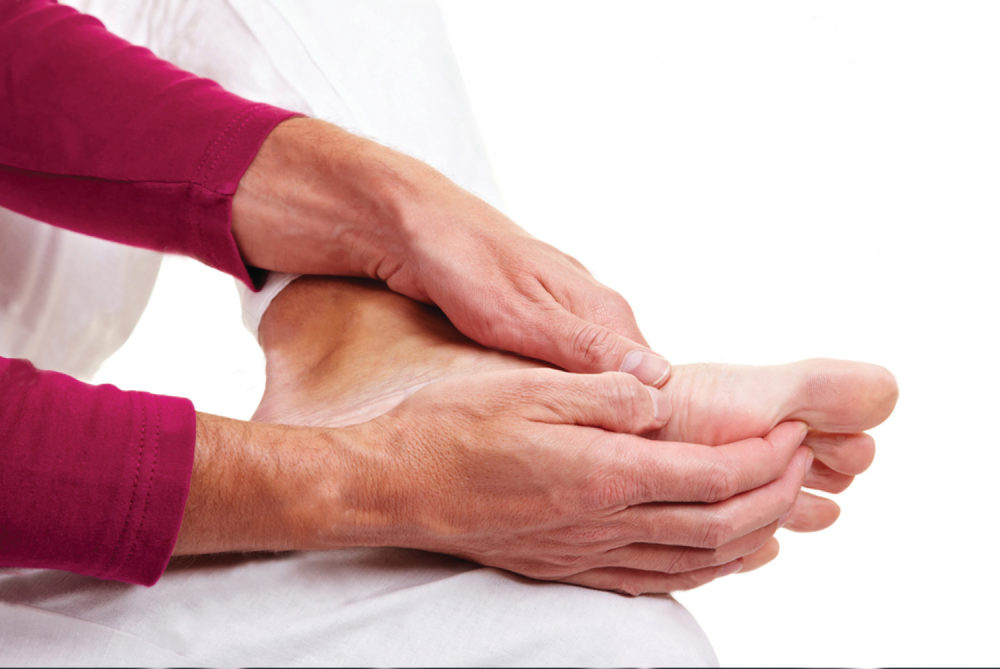
Feet are the Foundation to Good Health
by Katherine E. Pratt, B.S., D.P.M.; Podiatry Associates of Charleston, LLC
There are five major issues that usually prompt a person to visit their podiatrist; nail changes, foot shape changes, skin issues, pain, and injury. Usually these problems are minor inconveniences in our daily lives and are easily addressed.Sometimes, however, they are something else entirely.
Feet are the foundation on which we stand and can tell us important information about our overall health. Many serious systemic conditions manifest as problems that can appear in the feet. Vigilance is the key to identifying a potential problem right as it starts and taking appropriate action to negate its effects.
As we age, diminished flexibility, eyesight, and hand strength can often make routine foot care and inspection more difficult for a person to do on their own. That is why it is important to establish a relationship with your podiatrist and to be seen on a regular basis.
While the majority of the time a person spends with their podiatrist focuses on care of the feet, there are multiple subtle clues about the patient’s overall health that the doctor is detecting at the same time. Even a simple conversation about your recent vacation, a glance at your shoes, or walking with you to the reception desk, tells your doctor countless things about not only your feet, but your entire constitution.
Listed below are the five major foot issues along with just a few examples of other conditions to which your feet might be alerting you.
Nail changes: Over time, it is normal to have some thickening and brittleness in your nails. However, significant changes such as discoloration, flaking, and an irregular surface appearance can signify a problem. Nail fungus (Onychomycosis) is a very common issue and can be treated with several modalities including topical or oral medications, nail removals, or laser pulses. In addition to direct injury, certain systemic conditions can manifest as changes in the nails. Psoriasis, bowel disease, heart disease, anemia, blood disorders, immune disease, thyroid issues, autoimmune disease, malignancies, and connective tissue disease are just a few examples.
Foot shape changes: As the years go by, it is common to see changes in the shape and support system of the feet. Ligaments and tendons can loosen or fail to function properly leading to problems such as a lowering of the arch, tightening of the joints, and deviation of the digits. Bunions and bent toes can have multiple causes. Some of these conditions are congenital (from birth) and can worsen over time. Trauma to the feet, even if it was in our youth, can manifest as misalignments in the foot. Certain systemic conditions such as osteoarthritis, rheumatoid arthritis, psoriatic arthritis, and connective tissue disease can also cause changes in the appearance of the foot.
Skin Issues: Itching, redness, cracking, odor, and dry skin are typical issues that bring a patient to their podiatrist. Usually these problems are easily treated with medications. However, sometimes the underlying cause can be something more significant than just the outward symptoms. Skin changes seen in the feet can be from systemic conditions such as eczema, psoriasis, drug interactions, connective tissue disease, autoimmune disease, bacterial or viral infection, arthritis, and many others. In addition, swelling that can appear in the feet can be from vascular issues, heart disease, injury, or positional limitations.
Pain: There are many different causes and types of pain that affect the foot. The pain may be mild to severe, acute or chronic, and can be from either a foot or systemic issue. Toenails that are too long or thick or incurved can cause significant pain and limit a patient’s activity and choice of shoe gear. Poor circulation can lead to a sharp stabbing ischemic pain in the feet and toes. Neuropathy from systemic conditions such as diabetes mellitus, palsy, and nerve disease and can produce a sensation of burning, tingling, and numbness all at the same time. Bone and joint pain can be caused by arthritic conditions, injuries, and ill fitting shoe gear. Direct injuries to the feet can cause as many types of pain as there are types of trauma.
Injury: Our feet are abused on a daily basis. Overuse is a common cause of many foot issues and can lead to a significant number of problems later. Stress fractures and muscle or ligament strain can be debilitating. Open wounds, cuts, insect bites and the associated infections that can arise may cause major complications if they are not addressed rapidly and properly. Fractures to the feet can be simple such as a broken bone in the smallest toe to a compound fracture of the calcaneus. Both injuries are painful and limit a person’s activities but they are treated quite differently.



